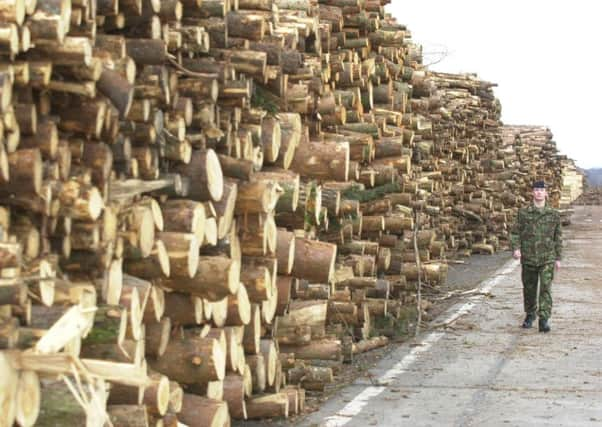The Week that Was: Time of Despair for Famers


Officials dealing with infected animals refused to remove an exclusion zone around a South Yorkshire farm, despite the fact that it had been given the all-clear.
Hundreds of sheep and cattle had been needlessly slaughtered at Conisbrough Farm, near Rotherham, because Ministry of Agriculture officials suspected the animals were suffering from the disease. But blood tests revealed the animals were all healthy and the farm was given a clean bill of health by vets.
Advertisement
Hide AdAdvertisement
Hide AdNevertheless, Rotherham Council said that until it received the official word from the Ministry restrictions could not be lifted and the eight-kilometre exclusion barrier remained in place.
Farmer Cyril Cooper had had to watch 20 of his cattle and 280 sheep being destroyed, yet sores found in the mouths of some of his sheep were later attributed to eating briar bushes.
Meanwhile, towns and villages in the Yorkshire Dales were stepping up their campaign to allay fears over foot-and-mouth.
Tourist information centres were taking hundreds of calls from potential visitors who wanted to know if it was safe to visit the area.
Advertisement
Hide AdAdvertisement
Hide AdYvonne Fortune, manager of Settle Tourist Information Centre, said: “The answer is yes, and there is lots to enjoy when they get here.” Footpaths, bridleways and towpaths were closed, but most visitor attractions were open as usual, she said.
A plaque in memory of murdered Leeds United fans Kevin Speight and Christopher Loftus was unveiled this week – exactly a year after they were stabbed in Istanbul on the eve of a Uefa Cup semi-final between Leeds and Galatasaray.
The plaque was placed on the Revie Stand at Elland Road, from where the two friends always watched home games. Father-of-two Mr Speight, 40, landlord of the Bay Horse pub at Farsley, and 35-year-old Mr Loftus, a BT engineer from Burmantofts, were killed when Turkish fans went on the rampage in Istanbul and attacked visiting supporters. Neither victim was involved in the violence, but Mr Speight was stabbed 17 times and Mr Loftus four times.
Then Leeds United chairman Peter Ridsdale said: “Our thoughts and best wishes go to their families, as we pause to reflect once again on the futility of violence.”
Advertisement
Hide AdAdvertisement
Hide AdA Dutch lorry driver was sentenced to 14 years in prison after the deaths of 58 Chinese illegal immigrants found suffocated in the back of his vehicle.
The bodies had been discovered in Perry Wacker’s lorry when it was searched at Dover ferry port after arrival from Belgium. Wacker had closed the air vent in the side of the container to prevent discovery by immigration staff, Maidstone Crown Court heard.
The driver was found guilty unanimously of 58 charges of manslaughter as well as four counts of conspiracy to smuggle immigrants into the UK by a jury after a six-week trial. Wacker’s co-accused, Ying Guo, was given a six-year sentence for conspiring to smuggle illegal immigrants into the UK.
In Sheffield, the city celebrated the opening of its £15m Millennium Galleries this week. Part of Sheffield’s Heart of the City project, the Lottery-funded building was primarily made from concrete and glass, with a series of galleries extending from a central avenue connecting Arundel Gate with the Winter Gardens.